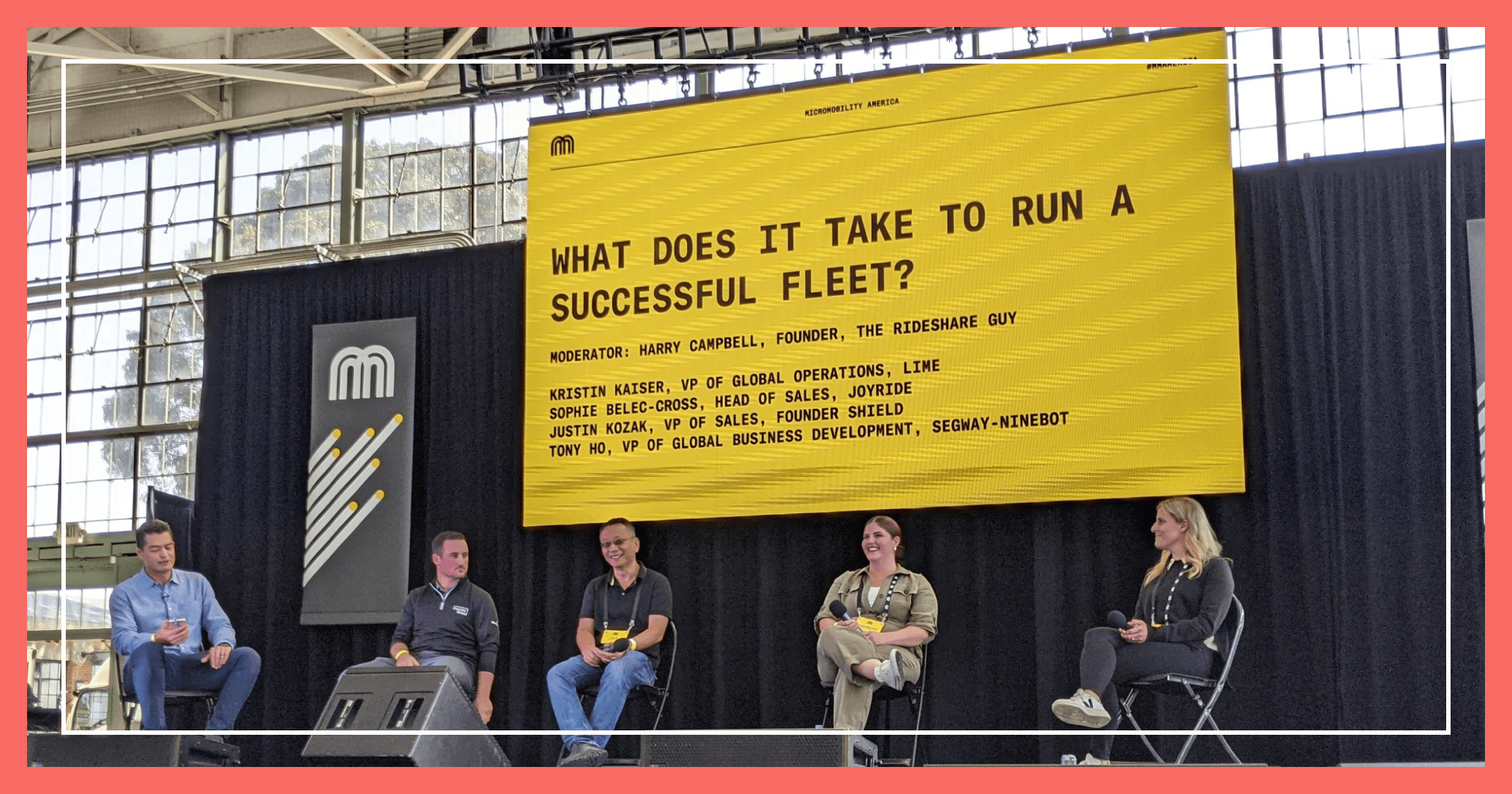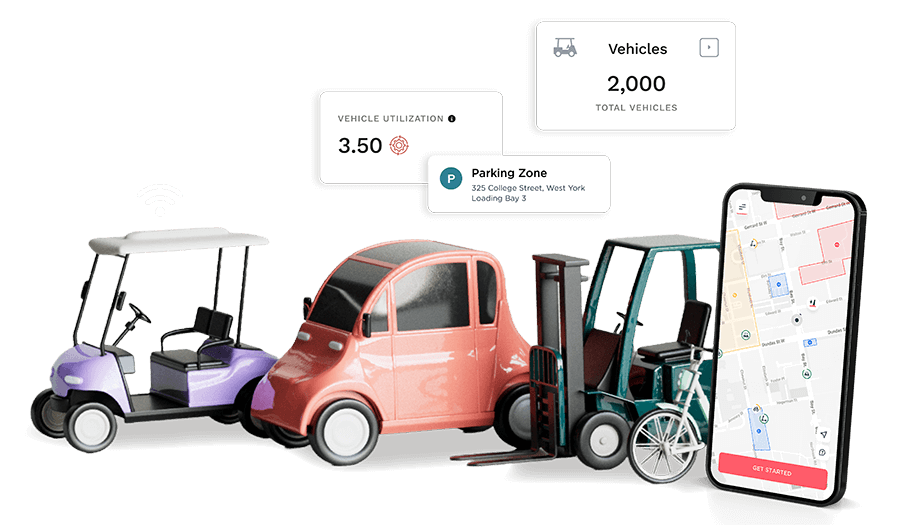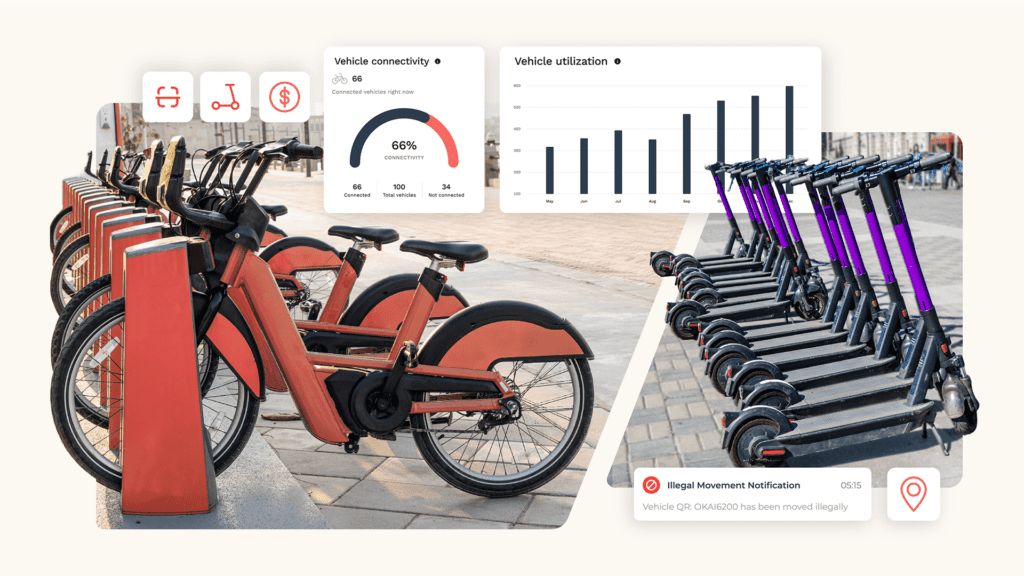Let’s talk about the top five rules for running a profitable micromobility fleet. We recently had the opportunity to discuss the top tricks of the trade–and an important trifecta–in real life and on-stage at Micromobility America in San Francisco. Our partners at Founder Shield and Segway Commercial joined Joyride’s Sophie Belec-Cross to discuss the importance of that initial hardware-software-insurance equation.
We’ve kept the panel momentum going by elaborating on the top five overarching factors to ensure immediate and long-term operational success.
Get ready with research and permits
Befriending your local council is imperative when starting a shared mobility business. The goal of getting permits is to avoid potential lawbreaking or the risk of getting fined.
Do your homework. Learn about your competitors, market opportunities and the type of business model you will be implementing (i.e., public or private). The size of your operation and fleet type will help you narrow down what regulations and government contracts already exist.
When applying for permits, consider questions like:
- Do you have to apply for an RFP?
- What’s the process for approval?
- Is it through tender, or is it through the city council approval?
Your permits are a determining factor for the structure of your fleet. Ultimately, this affects the hardware, software and insurance that you choose. Getting the permit process started begins with a Request For Proposal (RFP). For public-facing scooter fleets, RFPs are standard; but not all applications are created equal. In addition, an application can range anywhere from 20 to 100 pages. This can include detailed questions on things like the type of hardware you are using, its safety features, how you plan to recharge your hardware and its logistics, the software you plan to use, and the rates of rides (just to name a few).
Overwhelmed? Don’t be. We’ve got you covered.
Joyride offers services that help you with your RFP writing. We can support your needed market research, help you understand what hardware and software are required and how to explain it compellingly. Check out our article on writing RFPs for more details.
The importance of micromobility insurance
Insurance is an investment, but one that’s imperative to make. Micromobility coverage is a niche area in the insurance world. So we recommend tackling this early on in your business development process.
It’s important to understand the parameters the city will look for. Specifications include if your operations feature docked or non-docked vehicles, or if the fleet is comprised of scooters, electric bikes, mopeds, traditional bicycles or a combination of everything above.
When thinking about insurance, it’s important to understand these implications:
- Are you in a Tier 1, 2 or 3 city?
- How many vehicles do you require?
- Does your market require general liability insurance?
Find the right provider who can insure your vehicles at a premium that aligns with your budget. Need a recommendation for cost-effective and world-class global plans? Check out Joyride Alliance.
Joyride Alliance formalizes consulting work to help operators have all the tools they need at launch, connecting the dots between insurance hardware and software.
Securing sophisticated software
Software is the backbone of any micromobility fleet. Without a seamless software offering, users can’t rent your vehicles through a branded app (nor can they access all of the automated tools that come along with an app-based vehicle rental). Businesses also can’t properly track their fleets, accept payment or provide third-party integrations. The list goes on.
These features run your business; dependable software helps keep costs low. In fact, Joyride’s SaaS platform can reduce operating costs by more than 160% compared to companies that have their own in-house development team (based on a fleet size of 200 vehicles). Aside from money, time is also saved through automated usage and billing reporting.
In addition, software that allows third-party integrations and has online customer support can help you adapt to the rapidly changing industry. To get the best results, learn more about Joyride’s software offerings by requesting a free demo here.
Get the right hardware, right now
There are many micromobility manufacturers, but picking the proper hardware for your business depends on your location, business model, fleet type and budget. Take your terrain, regulations and requirements all into account, as well as specs such as maximum speed, swappable battery dynamics and battery life, docking station compatibility, etc.
Many vehicle hardware manufacturers require a minimum order, starting at 100 units or more. When considering your budget, the startup costs associated with a 100-vehicle fleet typically cost approximately $100,000. This takes into the account the costs of hardware, software, insurance and permits. Did you know that your fleet is likely to become profitable within four months in operation? Read more about the revenue potential of a scooter-sharing business here.
Crowdfunding is an excellent way to get the capital needed to start your fleet, just take a look at UK scooter operator Zipp Mobility’s experience.
One factor to think about is lead time, which can vary between 45 to 90 days for hardware production and, depending on your region, an additional 45- to 60-day shipment period. The sooner you place your order, the better. And taking the route of ordering your vehicles through our team is optimal to ensure your best pricing and delivery times. Learn more about vehicle selection in our Micromobility Hardware Brochure.
Moreover, build a team to run your hardware. Make sure you have a big enough squad to support getting started and running the fleet: someone technical, someone mechanical, boots on the ground and people for admin. Due to the global pandemic, there is a labor shortage right now. Be mindful of this and take the time you need to staff a functional team.
Integrations for long-term revenue potential
Integrations bring your software and hardware together full-circle.
Getting creative with third-party integrations, such as docking stations, navigational technology and data compliance, will strengthen your rental service and save money in the long run. For example, self-driving e-scooters are a great way to prevent your vehicles from abandonment. To have this integration, you’d need a strong mapping software and a dependable connection to your hardware so you can get your vehicle back to its desirable location at the push of a button.
Docking stations, meanwhile, continue to increase in popularity. These charging hubs help you save money in insurance. In fact, utilizing a docked model can lower your insurance by 5x times compared to a free-floating scheme. And they also provide added revenue potential through digital signage and advertising campaigns housed within the portals themselves.
Finally, your integrations can also be promotional-focused. For example, Joyride’s platform allows you to send SMS texts and emails to communicate with customers in your company’s branding. Marketing promotions are a great way to help grow your revenue. The more frequently and effectively you promote your services, the better brand recognition and customer retention you will receive.
To learn more about running a profitable micromobility fleet, speak to a Joyride sales representative today.







